1) Nerja Cave (Málaga, Spain)
Six paintings of seals on stalactites discovered in 2012. Some charcoal remains were found beside the paintings: they were radiocarbon dated about 43,000 years old, although it is pending to date the paint pigment itself. If such dating can be confirmed, this will imply that Nerja Cave art is the earliest human paintings ever found and the oldest Neandertal art (they were the hominids living in that region at that time). They coexist with other 2 groups of paintings, one from the Solutrean period 20,000 years B.P. and another from the Magdalenian period around 12,000 B.P.
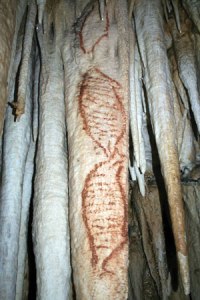
2) Altxerri (Guipúzcoa, Spain)
A giant bison (4 m long) in the upper gallery of the Altxerri cave, from the Aurignacian period. It was dated 39,000 years old, published in 2013. Within the bison some other figures were found in further studies: at least a cat and a bear.
The lower level of the cave also has Magdalenian paintings (14,500 to 11,700 years BP): 68 bisons, 7 reindeers, 6 goats, 5 horses, 4 fish, a deer, a bear and a snake.
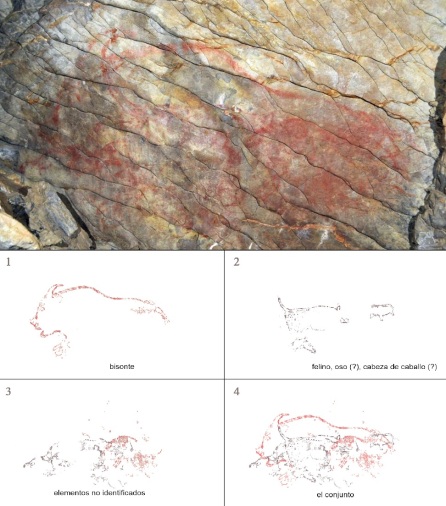
3) El Castillo Cave (Cantabria, Spain)
A study based on uranium-series dating was published in Science in 2012, showing that some paintings were made in the Early Aurignacian period, with minimum ages of 40.8 K years for a red disk, 37.3 K years for a hand stencil, and 35.6 K years for a claviform-like symbol. This dating falls within the framework of Neandertal occupation or the first modern humans in that region. The cave was discovered in 1903 and has more than 150 figures.
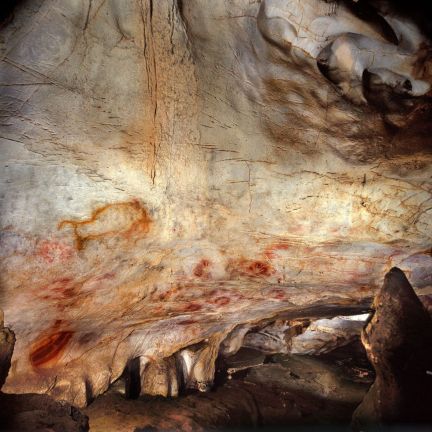
4) Gorham’s Cave (Gibraltar, UK)
A deeply impressed cross-hatching carved into the bedrock, discovered in 2012. It has remained covered by an undisturbed archaeological level containing Mousterian artifacts made by Neandertals and is older than 39,000 years B.P.
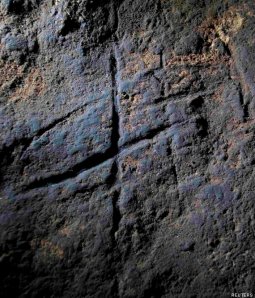
5) Abri Castanet (Dordogne, France)
Some engravings depicting vulvar forms and a zoomorph, discovered in 2007. According to radiocarbon dating they were made about 37,000 years old by Homo sapiens from the Aurignacian period.
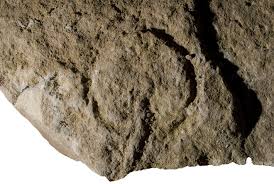
6) Venus of Hohle Fels (Schelklingen, Germany)
A female mammoth-ivory figurine found in 2008 in the basal Aurignacian deposit at Hohle Fels Cave. It was made at least 35,000 years B.P.
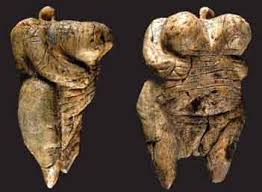
7) Altamira (Cantabria, Spain)
Although the famous polychrome bisons are dated 15,000 years old (Magdalenian period), a recent study shows that some of them are painted over earlier red symbols like the triangle below, which are dated by uranium-series to earlier than 35,600 years ago (Aurignacian period). The art at Altamira was produced during a prolonged period of time, at least 20,000 years (between 35,600 and 15,000 years ago).
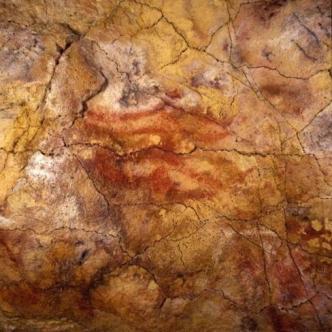
8) Bird from Cantalouette II (France)
Found in 2015 in the Cantalouette II open-air site in southwestern France, it is a unique piece because of the theme (a naturalistics detailed bird) and the technique used for engraving (sunk-relief). It is one of the earliest examples of Aurignacian portable art, and quite unusual in the European Early Upper Paleolithic.
9) Lion-Man of Hohlenstein-Stadel (Germany)
Found in 1939 in Stadel-Höhle im Hohlenstein Cave. It was carved out of mammoth ivory using a flint stone knife 30,000 years ago. The lion is represented by the head, the long shapedbody and the arms formed like hind legs. The human part is represented by the legs and feet, as well as the upright position.
It stands about 30 centimeters tall. Its creator polished it with saliva and leather. According to an experiment, it likely took about 320 hours to carve the figure.
The original was heavily damaged, 220 fragments were found in the cave. In 1988 it was reconstructed but 30% was still missing.
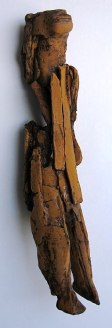
In 2011 a new reconstruction was made by adding 1,000 found new fragments found in the cave after sifting through all of the rubble from 1939. The result was an almost complete Lion-Man!
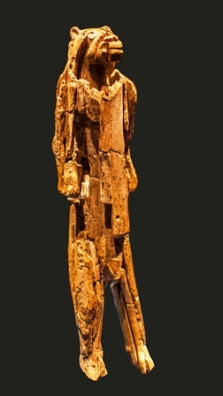
10) Chauvet Cave (France)
Discovered in 1994, it contains 425 graphic units depicted with great quality and very well preserved. Animals like horses, cattle, cave bears, cave lions, panthers, cave hyenas and rhinos. There is also one partial Venus figure composed of a bison head and a vulva attached to an incomplete pair of legs.
The dates for charcoal in the paintings are more than 30,000 years ago, in the Aurignacian period. However there are some different criteria to date this cave:
- In March 2014 a report published in L’Anthropologie suggests a misdating because the paintings involve carbon from charcoal mixed with substances that include carbon from older sources, such as minerals. Instead, it suggests to place the paintings within the Gravettian and Solutrean, hence 25,000 years old or less, when this type of works were typically produced, and when they are coincident with a particularly intensive and diversified local human occupation.
- In April 2015 a new study was published in PNAS, based on 259 radiocarbon dates mainly related to the rock art and human activity in the cave. It shows two distinct periods of human occupation: from 37 to 33,5 Ka and from 31 to 28 Ka.
A fabulous documentary of the Chauvet Cave was made by Werner Herzog in 2011: Cave of Forgotten Dreams.
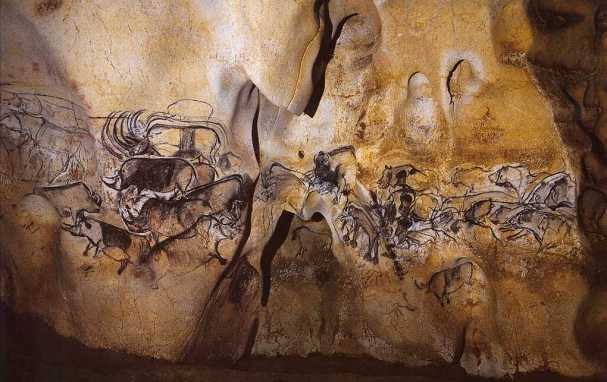

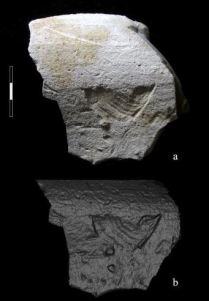
Pingback: NutcrakerMan: Newsletter 15-sep 2014 | Nutcraker Man
Pingback: Bitacoras.com
Pingback: Hoy Nutcracker Man cumple… 1 año! | Nutcracker Man
Pingback: Today Nutcracker Man turns… 1 year-old! | Nutcracker Man
Hello
Thé head of the statute, is very little comparer to the body. I saw this feature also in other artworks. Does this mean that the group of hominin that created the artwork lived in proximité of species in which females have little heads?
Me gustaMe gusta
Or did artistique sacrifice, yet they learn that, thé head to show the body because the ivory pièce had limited dimensions?
Me gustaMe gusta
Hi perplexe, are your referring to any particular statue? Actually many venus statues have body measurements which are amazingly approximate
Me gustaMe gusta
Sorry for delay. I discovery the commenting notifications no more reach me In inbox as it used to. Mais bé a bug /
I meant thé sixth section of the article.
I wish I did not disturb with my suggestion on difficile vida article.
Have nice day
Me gustaMe gusta
Aha! That is not the head but the cord hole of the figurine, which is supposed to be a pendant. Thanks for your comments. Good day to you too.
Me gustaMe gusta